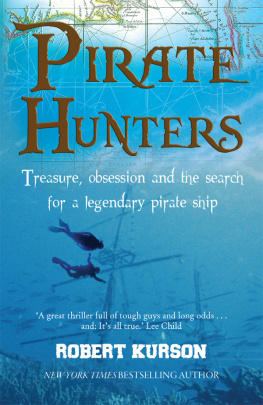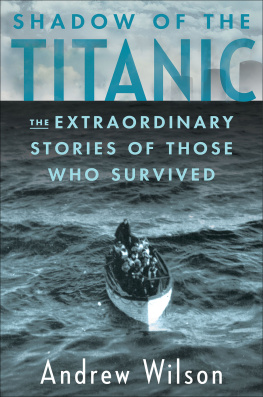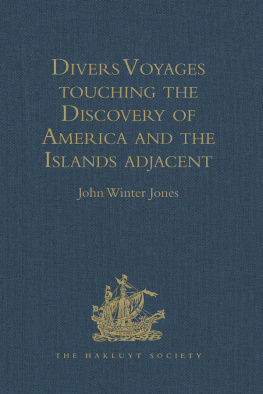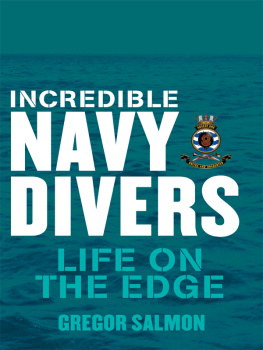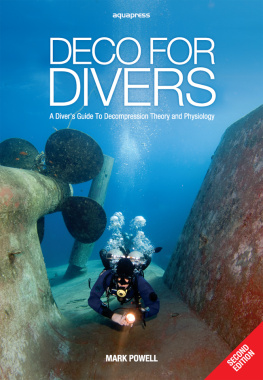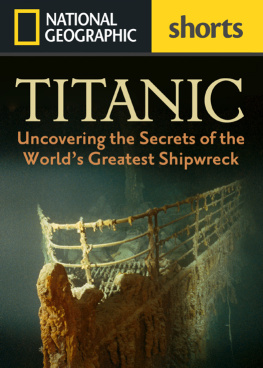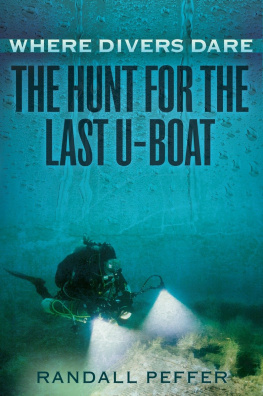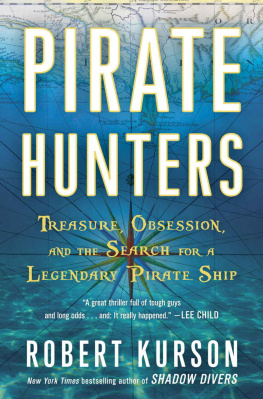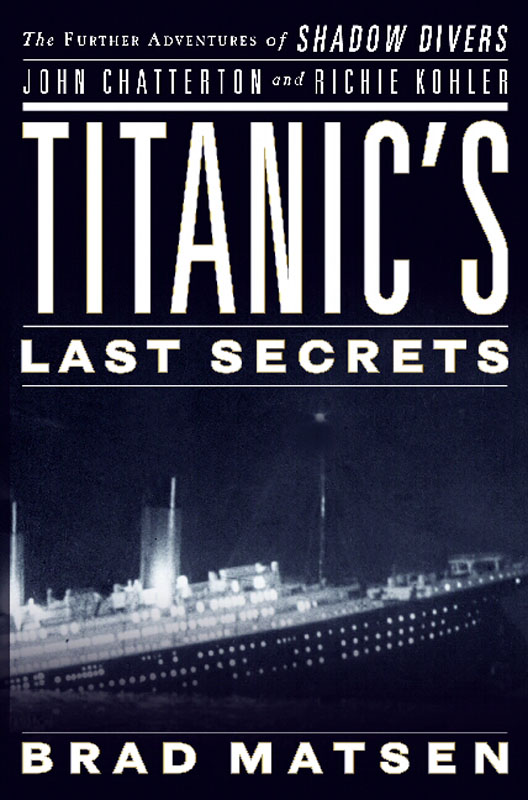Copyright 2008 by Titanic Partners, LLC and Brad Matsen
All rights reserved. Except as permitted under the U.S. Copyright Act of 1976, no part of this publication may be reproduced, distributed, or transmitted in any form or by any means, or stored in a database or retrieval system, without the prior written permission of the publisher.
Twelve
Hachette Book Group USA
237 Park Avenue
New York, NY 10017
Visit our Web site at www.HachetteBookGroupUSA.com.
First Edition: October 2008
ISBN: 978-0-446-54339-2
also by BRAD MATSEN
Descent: The Heroic Discovery of the Abyss
Fishing Up North: Stories of Luck and Loss in Alaskan Waters
Reaching Home: Pacific Salmon, Pacific People
Planet Ocean
for Diane
HISTORY
A late-night highway phone call was the beginning of it. When John Chattertons BlackBerry chirped, he was northbound on the New Jersey Turnpike with the cruise control set at seventy-two, eighties rock on the radio, and a box of fried chicken thighs on the seat next to him. He was staying awake on pure willpower after a long day, knowing that waking up the next morning with his wife on the coast of Maine would be a hell of a lot better than waking up alone in a motel room.
As much as he liked being home, Chatterton had no complaints about the time he was spending on the road. He had always seen his life as an album of before and after pictures. Before Vietnam, after Vietnam. Before his first wife, after his first wife. Especially, before U-869, and after U-869. Since 1997, when Chatterton and Richie Kohler had identified a U-boat theyd found off the coast of New Jersey, exploring shipwrecks was no longer just Chattertons obsession, it was his job. He and Kohler were the stars of a PBS documentary and a television series, Deep Sea Detectives, diving and getting paid generously to do what they loved to do.
Since the U-boat, there had been other before-and-afters in Chattertons life, but the shocker was cancer. A squamous cell carcinoma had announced itself as an odd ripple in the familiar terrain of his neck on an otherwise ordinary morning shaving at the bathroom sink. That discovery had propelled Chatterton into the world of Big Medicine, which offended him even more than the cancer, but four years after the numbing litany of chemo, surgery, and radiation, he was still alive.
Chatterton picked up his BlackBerry as the sodium-vapor glare of the turnpike rest area north of Newark flashed by on his left.
John, its David Concannon. Got a minute to talk?
For you, lots of minutes, Chatterton said.
Concannon was a lawyer in Philadelphia who had hired Chatterton as an expert witness in a lawsuit involving the death of a scuba diver. It had been dragging on for more than a year. One of the skills Chatterton had picked up after U-869 was interacting with clients without being disingenuous or getting too close. Concannon wasnt a friend, so Chatterton didnt really know him, but he had checked the lawyer out before agreeing to work with him. Concannon was big on the Explorers Club, went to meetings, was the president of his chapter in Philly, and was one of the clubs lawyers. Concannon ran a company that gave advice to explorers putting expeditions together. He seemed like a nice enough guy.
So, Ive got an idea for you, Concannon said.
Chatterton was used to this part of life after U-869, too. Everybody had an idea for Deep Sea Detectives. The premise of the series was simple: Every shipwreck presented a mystery; he and Richie Kohler solved it. Chatterton listened to people who called him with ideas because some of them panned out, and some were just good stories.
Lets hear it, Chatterton said.
The Big T, Concannon said. The words hung in cellphone space.
The Big T? Chatterton couldnt figure out what Concannon was talking about.
Titanic, Concannon said, breaking the awkward silence. He went on to say that he had been an adviser to an expedition in 2000 that had been picking up Titanic artifacts for a museum exhibit, and something had been nagging at him ever since. At the end of his last dive in a Mir research sub, he saw ribbons of steel that looked like they had been peeled from the bottom of a ship. Scattered around them, there was debrisshoes, suitcases, trunksthat might have come from a cargo hold. Concannon had talked about the ribbons of steel with others who had been to the wreck of Titanic, but none of them had seen anything like them.
Where are the pictures? Chatterton asked.
No pictures, Concannon said. It was at the end of a five-hour dive and we were out of video tape.
What about stills?
No stills. I shot some, but the film wasnt advancing in the camera.
Chattertons bullshit detector went off. It wasnt just the coincidence of both video and still cameras going kaput at the same time. Things like that happened. Something in the lawyers voicea little too much eagerness, maybeput Chatterton on alert. At the same time, Concannons story presented him with a classic reward-versus-risk situation. As the potential reward increased, greater riskswhether of life or moneybecame more and more tolerable.
No underwater mystery in the world upped the stakes like Titanic. After countless ill-fated voyages of ships, it was the most famous wreck of all. Almost a hundred years after Titanic sank, it still captivated people everywhere. When Chatterton and his wife, Carla, were touring Asia on motorcycles, they took a break in a village whose residents rarely saw Westerners, and stood against a hut for the shade. It had no door, so Chatterton stole a glance inside. A single room, no furniture, dirt floor. The only thing on the wall was a three-by-five-foot poster of Kate Winslet and Leonardo DiCaprio, with Titanic steaming head-on between them.
Chatterton knew only the outlines of Titanics brief life and unforgettable death. The ship was as long as four city blocks, as wide as a freeway, and as tall as a nine-story building. The Harland and Wolff shipyard in Belfast built it. The White Star Line owned it. J. P. Morgan owned the White Star Line. Titanic hit an iceberg on its maiden voyage, and sank a couple of hours later in the early morning of April 15, 1912. People were still arguing about exactly how the ship sank. It had been built with watertight compartments, which should have kept it afloat until help arrived. But they didnt. There were only half enough lifeboats for the 2,200 passengers and crew, and many lifeboats were less than full when they were launched. More than 1,500 people died. Chatterton believed there were three kinds of history: what really happened; what most people think happened; and what people in power wanted future generations to think happened, which is 90 percent of the history in books.
Concannon was still talking.
John, I saw something that might make a difference in what the world knows about how that ship sank, he said. I can take you right to it. I wrote the coordinates in my notebook.
Who else has seen these ribbons of steel? Chatterton asked.
Concannon told him that neither the sub pilot, Anatoly Sagalevich, nor the other man, one of the expedition leaders, paid any attention to them.
Why not? Chatterton thought. What he said was Let me think about it, Dave.
Concannon told Chatterton he needed a decision right away. The Russians who owned the mothership, Keldysh, and the two Mir subs were provisioning for the whole summer of


